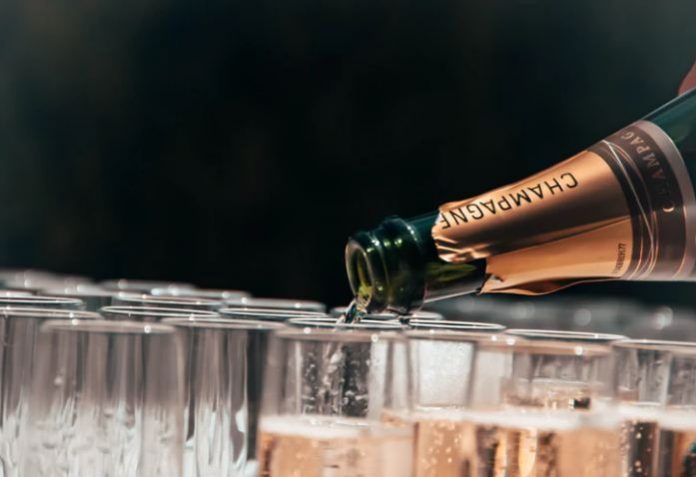When you’re in a stylish society, you want to appear knowledgeable about your table manners, your cutlery and not to forget your wines. You must be able to distinguish between the soup spoon and the dessert spoon.
You need to know enough not to put your elbows on the table. And, last but not least, you must be able to talk about sparkling wine, as it is different from champagne.
Actually, in a sense, champagne is not different from sparkling wine, because all champagnes are sparkling wines.
However, not all sparkling wines are champagnes. Feeling confused? Hang on.
Sparkling wine is a carbonated wine. It is called ‘carbonated’ because it contains a large amount of dissolved carbon dioxide, which is the same stuff that imparts the fizz and sizzle to popular drinks like Coke or soda.
Sparkling wines, too, have a fizz similar to your Coke or soda. They are carbonated during the second fermentation stage (double fermentation) of the grapes, which is once more than what normal wines have.
Thus, Champagne is a sparkling wine in this sense of the word. But you can’t call any sparkling wine champagne.
In fact, the name ‘champagne’ is legally protected in many countries in Europe and elsewhere, so people can sue you if you falsely label your product as champagne.
According to such stringent laws, sparkling wines can be labeled as Champagne only if a specific process in a certain region of France produces it.
And law protects even the name of that process! Guess what that region of France is called? No points for that one – yes, it’s called Champagne. Ha! Ha! Ha!
Now champagne is the most well known and one of the costliest of the sparkling wines in the world, but there are many other sparkling varieties of exotic wines produced in other countries and regions, that are very good in their own right.
For example, there’s the excellent Sekt of Germany and the distinguished Cava of Spain. The Spumante of Italy also has a long and distinguished tradition among sparkling wines. The Cap Classique of South Africa is not a very old variety, but some people prefer it to the European brands.
A recent survey reports the south of England is becoming suitable for grape cultivation and wine production. Some say this is a direct result of global warming.
Whatever be the reason, it’ll be interesting to see what kind and quality of sparkling wines they can offer to the world!
Sparkling wines are normally white or pink in color, but some Australian varieties are actually deep red!
For people who don’t like too much fizz but still want to enjoy the celebratory mood of the sparkling wines, there is the Vinho Verde of Portugal, which is known as a ‘frizzante’, or a ‘semi-sparkling’ wine.
So, when you want to celebrate any occasion with champagne but your purse isn’t up to the mark to buy the genuine stuff at the exorbitant price, you can try one of these not-so-pricey and great quality sparkling wines instead of indulging in fake champagne at a cheaper price.
In some countries like the USA, you can’t even distinguish between genuine champagne and a bogus one, because these countries didn’t sign the treaty that protects that name. Anyone here can label their cheap booze as ‘champagne’ and sell it legally.
So, don’t let yourself be duped – don’t buy champagne such as a spurious Dom Perignon unless you have substantially fat pockets and you can go for the real stuff. Try a Sekt or a Shiraz instead, and your celebration will be as spectacular as ever!

